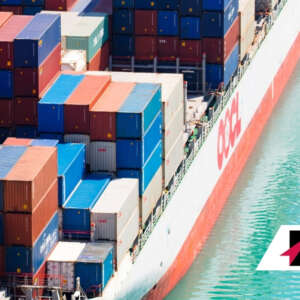The pandemic that has gripped the world over the past year has shown just how vulnerable supply chains can be. Manmade and natural disasters and unpredictable situations can leave a supply chain, and its managers, exposed. A risk mitigation strategy is necessary to be able to prepare for unplanned disruptions.
The Impact of Disruptions
Today’s supply chains are extremely complex, with a large number of products that are sourced, produced, and stored before they are sold. Supply chain disruptions like disasters or global events like the COVID-19 pandemic can occur without warning. Disruptions tend to cause a ripple effect throughout the supply chain, whereas an individual event such as a delay in supplies can be handled with effective supply chain management practices. An unexpected change can affect the entire supply chain, slowing down production and the delivery window for goods.
In addition to natural disasters and global events like a pandemic, disruptions can also occur due to transportation delays, product issues, and price fluctuations. A good supply chain mitigation strategy can ensure that these types of events do not cause a major issue within an organization.
The COVID-19 pandemic has affected many logistics companies and their supply chains. When entire regions are placed on lockdown to prevent the spread of the virus, it causes delays globally. Lockdowns have also created fluctuation in consumer demands, which is difficult to predict. It is estimated that it will take one to four years to recover from this disruption, depending on how fast the virus is contained on a worldwide scale.
Supply Chain Mitigation Strategies
The following six strategies will reduce the impact of a supply chain disruption:
1.) Expand the Supplier Base. Relying on just one supplier is risky because while it is cost-effective in the short run, one problem means the entire supply chain will be affected. Multiple suppliers can ensure that raw materials are on hand, but it does come with a cost. More than one supplier in different locations means that economies of scale are reduced, which increases costs. A less expensive option that still offers protection is a backup supply, where a reserve production capacity is kept for disruption. The cost only occurs when the supply source is needed.
2.) Regionalize the Supply Chain. Another consideration is to separate the supply chain by region. The advantage of this strategy is that the impact of losing supply from one location is contained within that region. Since fuel and transportation prices are only rising, a regionalized supply chain lowers the distribution costs.
3.) Stockpile Inventory. With the global pandemic and increase in e-commerce buying, many retailers have run low on inventory. Inventory should be kept at a level that is higher than operationally necessary to give cushion against disruptions. Depending on the item and production cycle, the stockpile must be carefully managed so that the costs of holding inventory does not outweigh the potential benefits.
4.) Create a Strong Supply Chain. A strong supply chain will be less affected by disruptions. By testing how operations react to different potential situations, any weaknesses in the chain can be identified and improved…before an event actually occurs. A strong supply chain can weather incidents more efficiently (and with less impact to the bottom line) than one with areas of weakness. A supply chain that is built to contain risk rather than allowing it so spread will protect not only the downstream of the supply chain but the company as a whole.
5.) Utilize Technology. Businesses that use technology in their supply chain increase visibility and transparency. Real-time data helps supply chain managers understand exactly what is going on within the chain and how to make the best decisions to remedy situations quickly and effectively.
6.) Work with a Supply Chain Expert. Managing a complex supply chain efficiently is important for every business. A logistics expert like Red Arrow can help you determine exactly how to handle disruptions based on your industry with solutions that work.
The combination of these strategies will protect the supply chain should an unpredicted event occur. Supply chain risk mitigation strategies will also give a company a competitive advantage should a global event occur. When managers respond to disruptions as soon as they occur, they can better control the subsequent damage. An updated risk mitigation strategy will benefit your business in many ways and prepare it for the next disruption.
Your Trusted Partner
At Red Arrow Logistics, we provide expertise and white glove customer service with fast-growing, complex, and high-value supply chains. As the next-generation model of logistics companies, we offer tailored transportation and logistics solutions — from single shipments to complex over-dimensional and international orders.
Red Arrow offers the scale and scope of services including air, ocean, and ground transportation to meet the budget and schedule requirements of the largest and smallest companies alike. If we can be of assistance, please email us at info@redarrowlogistics.com or give us a call at 425-747-7914.





